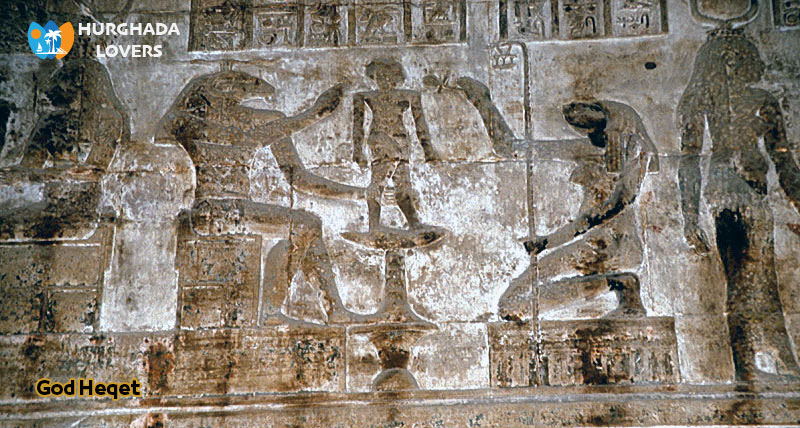God Heqet “Heket” | Facts Ancient Egyptian Gods and Goddesses | God of the birth and fertility and protect women in childbirth in Pharaonic Civilization & Most Important Ancient Egypt Deities, Mythology Symbols, Definition, Temple, Photo and more…
Facts and histories of real gods, tales and religious beliefs in the civilization of ancient Egypt and more.
The god Haqat or Haqat is one of the ancient Egyptian deities in the era of the Pharaohs.
She is the goddess or the goddess of childbirth during the ruling periods of the ancient Egyptians.
Mena Tanha appeared for the first time in history, and her knowledge was through the texts of the pyramids, and that was a sign from them to help that deceased king to make his journey to the afterlife in the sky, as she is the first and only wife of the god Khnum.
Hurghada lovers Offer Luxury Hurghada to Luxor Tours | El Gouna to Luxor Tours | Makadi bay to Luxor Tours | Sahl Hasheesh to Luxor Tours | Soma bay to Luxor Tours.
God Heqet
How was it photographed in the past?
In fact, Klint takes the form of a frog in the ancient Egyptians and in their myths.
● Or sometimes she takes the body of a female but with the head of a frog, and as long as she was photographed holding with both hands the well-known sign in ancient Egyptian life, the ankh, which was the symbol of life, and this is in the lung from her to give life to that newborn.
● We used to have many and very many amulets for it in ancient myths in that frog form, while in the past it was usually depicted in all tombs or temples in that half-human form, i.e. a human body, but with the head of a frog.
The role of the god Haqat in ancient Egyptian life
● In fact, she was responsible for playing the active role that pertains to her in how to help all women in ancient Egyptian life during childbirth, according to what was mentioned in the myths.
● It also seems that this form has been relied upon because there was a great ambiguity in the nature and how the life cycle of that frog is for the masses of Egyptians.
● It is also the same thing that had prompted them, after that, to sanctify her because of the presence of more of her characteristics, the injury that she used to perform under the name of the idol or the god Hafat since her presence and identification with her in the Fourth Dynasty BC.
● We used to say that the oldest indication in the ancient Egyptian myths was referring to how it was related to birth, which was due in its history to the rule in the era of the Middle Kingdom.
● And it was happening through the papyrus known as Westkar, which was discovered.
● In which the god Haqat had heralded the birth of a group of kings, and they were precisely the first three kings during the reign of the Fifth Dynasty.
● Accordingly, and since that time and that good tidings, the process of using that title, which is the god Haqqat, has taken place as an indication of them to refer to that god in the process of giving birth, or what is now called the midwife, but in ancient Egypt.
What was her relationship to other deities?
● In fact, let us emphasize a certain matter, which is that perhaps the connection of the god Haqqat with giving Talat from birth and life to the ancient Egyptians, as they believed in their myths, is the matter that then placed him in a close relationship with the idol Osiris, specifically in the other world.
● She was also revered and highly respected, as she is the wife of the idol Hor-Ur.
● In the past, the remains of the temple that belonged to her were found in the Al-Qusiya area. This is of course in addition to how they were portrayed in the past in a large number of temples of gods or other deities.
